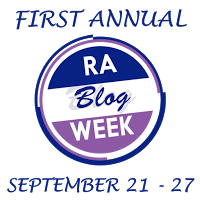HOW TO DESCRIBE YOUR PAIN TO YOUR DOCTOR IN THREE (SOMEWHAT) EASY STEPS
Forty-four years ago, when I first began my journey with chronic pain, acute and chronic pain was poorly understood and under-treated. Then, in 1995, the American Pain Society was formed and began an awareness campaign called, “pain as the fifth vital sign.” In 1991, JCAHO, short for Joint Commission on Accreditation of Health-Care Organizations, came up with nationwide standards for measurement and treatment of pain and the pain scale was born.
These days, when you go to the hospital or doctor for a painful condition, you will always be asked to rate your pain on a scale of 1-10. This, as you probably know, can be tougher than you think. How do you describe your pain, and the impact it has on your life?
In my experience, the more prepared you can be for a doctors appointment and the more concise you are during an appointment, the better your needs will be served. In describing your pain, use these three things: a pain rating scale (1-10), descriptive words, and a functional illustration. Feel free to use the following guide to help you the next time you need to accurately describe your pain. You will be doing yourself, and your health professional, a favor!
- Quick Guide to the Pain Scale:
Instead of trying to use the typical scale:
No pain Moderate Pain Intense Pain
1————————–5—————————–10
Try this:
- You have no pain
- Your pain is barely noticeable. Similar to a healing scab. It will hurt if you touch it but other than that you don’t notice it.
- You have pain, but it isn’t a bother. It is mild, and in no way interferes with your life.
- This is when pain is a distraction, however, you can easily adapt to it. Similar to a paper cut on your finger.
- Level four is when pain begins to move from mild to moderate. Pain interferes with your daily activities and does not go away. At level four, you can distract yourself from it for a period of time, for example, when you are doing something that you love.
- Your pain is now strongly interfering with your life. Maintaining a social, and work schedule has become difficult.
- Your pain is constant and you can’t get relief. You have difficulty concentrating and sleeping well is now a problem.
- Your pain has reached the severe level. It limits every aspect of your life, including self-care, work is now extremely difficult if not impossible, and your social life is very restricted. You are always in pain, and unable to do many of the things you used to take for granted. If it hurts to brush your teeth or lift a cup, a jar of milk, etc. you are at level 7
- Your pain is excruciating. It is hard to do anything but try to get comfortable and even this is not possible.
- Pain is at a level where you don’t want to talk. You have to work hard not to cry out in pain.
- You want to die. This is the worst pain imaginable. You can’t handle more pain than this.
2. Using Descriptive words for pain. When asked to describe the pain you can consult the following list:
Burning, Sharp, Dull, Aching, Radiating, Prickly, Tight, Taught, Boring, Throbbing, Pulsing, Heavy, Nagging, Searing, Hot, Fierce, Intense, Gnawing, Vice-like
3. Describing Functional Consequences of Pain:
Always end with a demonstration of how, exactly, the pain is impacting your life. Think about your home life, social life, and work life and give at least 2-3 concrete examples of how the pain is preventing you from functioning normally.
For example:
- “My pain makes it hard to go up and down the stairs in my house.”
- “I can no longer mow my lawn.”
- “At work, if I sit longer than thirty minutes, I limp when I get up and my pain is 2 levels higher.”
- “ I can no longer go out dancing with my friends.”
- “ I have stopped going to my exercise class because I can no longer participate without intense pain.”
Use these three steps the next time you find yourself at an MD appointment. Not only will your pain be treated more seriously, it will be treated more appropriately. And maybe you’ll find the smile you’ve been missing for so long!




